They shall grow not old, as we that are left grow
old;
Age shall not weary them, nor the years condemn.
At the going down of the sun and in the morning
We will remember them.
In an attempt to break the wargaming drought I have began work on some more terrain for Indostan and have even had time to write this post on Anzac Day. I find working on terrain more easier than painting at the moment, because I can do little bits here in there as (my very limited) time permits and can generally put what ever I am doing down immediately, which can be a problem when painting.
I decided to work on some walls, tall enough to conceal a miniature and provide near total cover. I have quite a large collection of low walls, but the higher walls will allow for some different tactical choices our games are currently lacking.
My usual go to material is foamboard, which I use for all my adobe buildings, a material I find very easy to use. For the stand alone walls though, I needed some studier stuff that was capable of standing upright. I haven't used cork tiles too much and have found it a little harder to cut at times, but it had the weight I needed for this project.
I cut a cork tile into strips then applied cardboard bricks to represent where adobe has fallen off the structure. I know the bricks can be scribed directly into foamboard, but not into cork. Besides I use this method on my adobe buildings all the time.
A couple of the wall sections required actual "bricks" to be removed, so once I duplicated the bare bricks on both sides I scored the outline of the missing brickwork with a knife and finally tore out the offending cork with a small pair of pliers. To add some texture to the cork I gouged out chunks with a pair of side cutters, to give that shot up look.
I used foamboard offcuts (I never throw offcuts away) to act as supports for the wall and chose to place one in the center of both faces. This is all that is needed to support the walls and they are quite sturdy. I made eight such sections in a couple of hours total. Lastly I made a single archway section, much shorter than the wall pieces.
One very important aspect of my terrain creations is a piece's versatility. That is, how useful is the piece in my games. If I can use it across multiple periods then I'm onto a winner. Although pieces that are highly specialsed usually look really good, I will go generic over specific any day. I hope my walls could be equally useful in an ancients game to that of a modern one.
After making the walls I laid them out on the desk and threw up a few combinations to test their use. They will be ideal for what I want and will endeavor to give them a covering of plaster and a coat of paint ASAP. Now to make a few hundred or so more... Painted walls now
HERE (Click the images to enlarge)
 |
| A single basic wall section. |
 |
| A foamboard building and Old Glory Pathan for scale. |
 |
| A combination using seven of the wall sections... |
 |
| ...another and... |
 |
| ...one more. |
 |
| A few more wall sections and I'll have a table looking just like this one! |









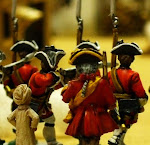
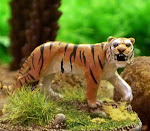






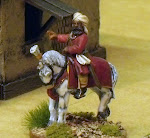

























































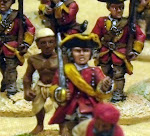

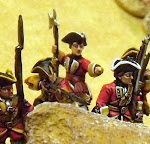
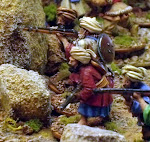








Great to see some updates on one of my favourite blogs again!
ReplyDeleteThose walls looks great. Good versitality and will provide some tactical challenges.
Good thinking to use cork. I wouldn't have though that myself.
Looking forward to some more Indostani eventually.
/Mattias
What a nice comment Mattias - thank you. I have noticed some very interesting developments on your blog as well. Nice!!
ReplyDeleteThat's a really nice and simple way of producing terrain. I'll definitely use that technique in the future.
ReplyDeleteRegards,
Matt
Very effective looking walls, that's some town in the last pic, wonder how long that will take you????
ReplyDeleteThat's inspirational stuff! You make it look so versatile and straightforward. The breached wall section looks particularly successful. I can’t wait to see it painted up.
ReplyDeletenice work, and their versatile enough to be used in other period games as well (always a bonus)
ReplyDeleteNeat wall sections - carry on building :)
ReplyDelete-- Allan
Great work! I've never used cork as a building material, but after seeing your endeavor, I might just give it a try. I noticed the tapered columns on the outside walls and think this a nice 'touch' to your work. Keep on keeping on!
ReplyDeleteExcellent! Simple, effective, versatile, and useful.
ReplyDeleteI agree with you on terrain being versatile and these look like they will fit the bill. Looking forward to seeing them painted along with that superb adobe building.
ReplyDeleteNice work.
ReplyDeleteThanks all - yours words are really encouraging.
ReplyDeleteFrank